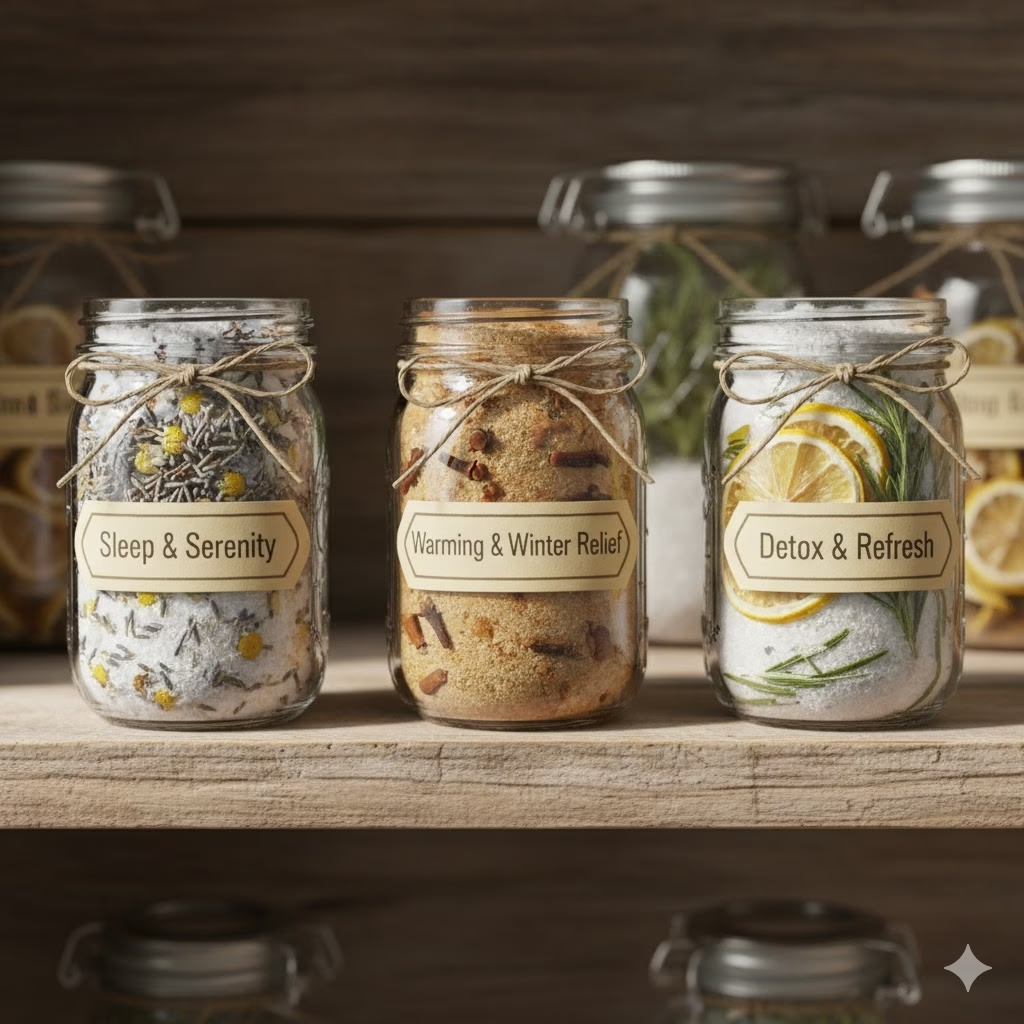
Like many of you, I started my zero-waste journey feeling completely overwhelmed. My kitchen cabinets were a chaotic mess of single-use plastic, half-used ingredients, and a nagging feeling that I was constantly contributing to landfill. I quickly learned that the secret to a sustainable, less wasteful home wasn’t buying fancy new eco-products, but simplifying my life down to a core list of truly versatile ingredients. This article is the guide I wish I had back then—a roadmap to a streamlined pantry that saves you money, cuts down on packaging, and makes sustainable living genuinely achievable. It all starts with having the right Pantry Checklist.
A Revolution in Your Cupboard: The Zero-Waste Pantry Checklist
For those stepping into the world of zero-waste living, the kitchen often feels like the final frontier. It is here that disposable packaging, food waste, and single-use products seem to multiply on their own. The good news? The solution is not in a complicated series of expensive swaps, but in a profound simplification. A well-stocked, zero-waste pantry is the bedrock of a sustainable home, moving beyond just food to become a source for powerful, non-toxic cleaning agents, personal care ingredients, and a host of other uses.
This comprehensive guide focuses on the ultimate Pantry Checklist: 20 fundamental, multi-purpose staples. These are the workhorses of the zero-waste movement—ingredients that not only form the basis of countless delicious meals but can also transform into effective, plastic-free household cleaners and more. By buying these items in bulk using your own reusable containers, you can dramatically reduce your household’s plastic footprint, save money in the long run, and streamline your entire cooking and cleaning routine.
The Zero-Waste Philosophy: Progress Over Perfection
Before diving into the pantry checklist, remember the golden rule of zero-waste: progress, not perfection. You don’t need to ditch everything overnight. Start by using up what you already have, and only replace it with a bulk, plastic-free alternative when it runs out. Your goal is a pantry that is organised, visible, and stocked with items that serve multiple functions, thereby reducing clutter, minimizing food spoilage, and eliminating packaging waste.
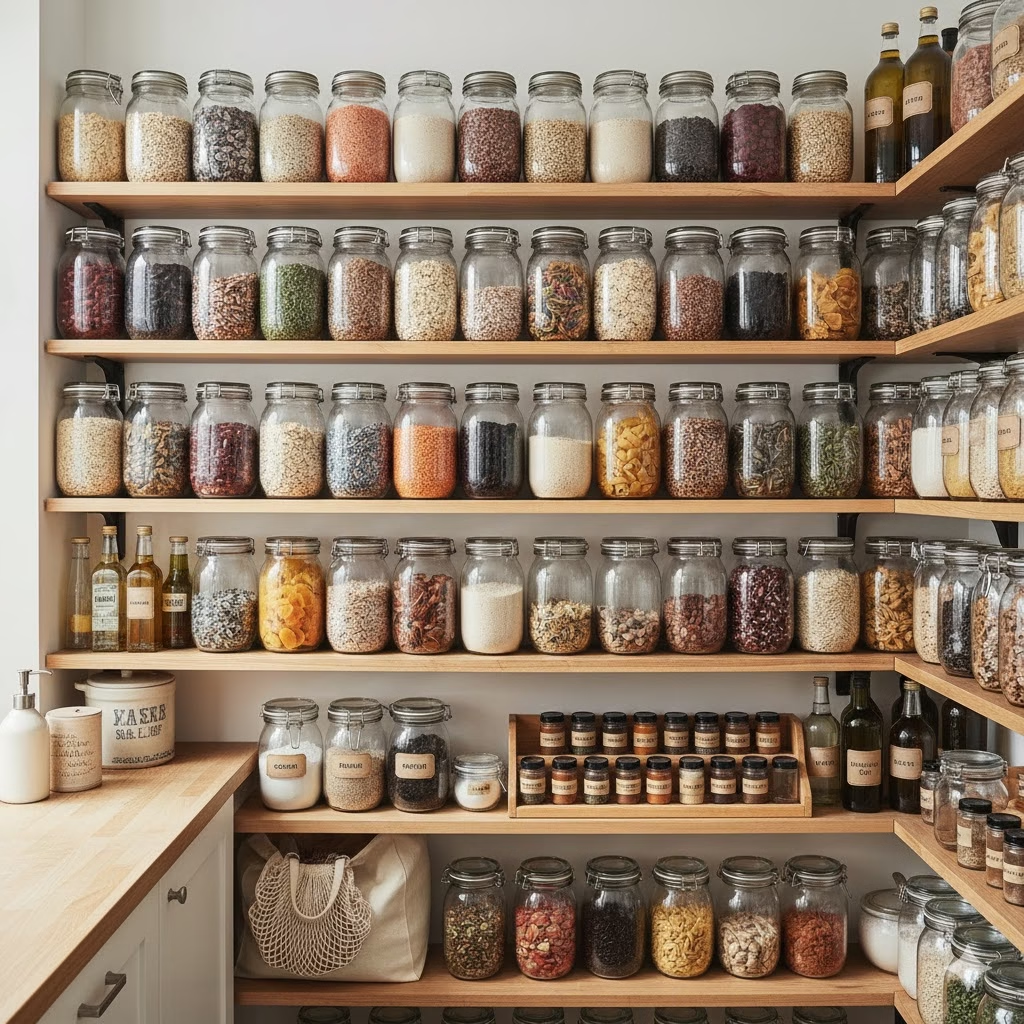
The Essential Pantry Checklist: 20 Multi-Purpose Staples
Our list of 20 staples is divided into categories for easy stocking and use. Each item is chosen for its versatility in both the kitchen and the wider home.
Section 1: Grains, Legumes & Bulk Powerhouses
These form the foundation of your meals and are the easiest items to purchase in bulk.
1. Dried Beans & Legumes (Chickpeas, Lentils, Black Beans)
- Why they’re essential: Excellent source of protein, incredibly filling, and versatile for a variety of global cuisines. Buying dry means zero waste and maximum value.
- How to do it: Soak overnight (for most beans) and cook in large batches.
- Example Use (Cooking): Use chickpeas for hummus, lentil for soups/curries, or black beans for burritos/burgers.
- Example Use (Zero-Waste Hack): The water from cooking chickpeas (aquafaba) can be whipped into a foam to replace egg whites in vegan baking (meringues, mousses).
2. Oats (Rolled/Jumbo)
- Why they’re essential: A breakfast staple, great for baking, and surprisingly useful for non-food applications.
- How to do it: Store in an airtight container to prevent pests.
- Example Use (Cooking): Oatmeal, overnight oats, or ground into a flour substitute.
- Example Use (Zero-Waste Hack): Use oats as a soothing, natural addition to a bath soak for irritated skin (place in a muslin bag to avoid clogging the drain).
3. Rice (Brown or White)
- Why they’re essential: The ultimate neutral side dish, binder, and bulk filler for meals.
- How to do it: Buy a large sack if possible and decant into multiple airtight containers.
- Example Use (Cooking): Base for stir-fries, rice bowls, or pilafs.
- Example Use (Zero-Waste Hack): Uncooked rice can be placed in a sock or cloth bag to create a reusable, microwaveable heating pad.
4. All-Purpose Flour (Wheat or GF Alternative)
- Why they’re essential: Necessary for baking, thickening sauces, and making DIY doughs.
- How to do it: Keep in a sealed container in a cool, dark place to maintain freshness.
- Example Use (Cooking): Bread, pasta, tortillas, or a thickening roux for gravy.
- Example Use (Zero-Waste Hack): Combine with salt and water to make a simple, non-toxic homemade playdough.
5. Pasta (Various Shapes)
- Why they’re essential: A quick, universally loved meal base that stores indefinitely.
- How to do it: Purchase from a bulk shop or in paper packaging.
- Example Use (Cooking): Quick weeknight dinners, cold pasta salads.
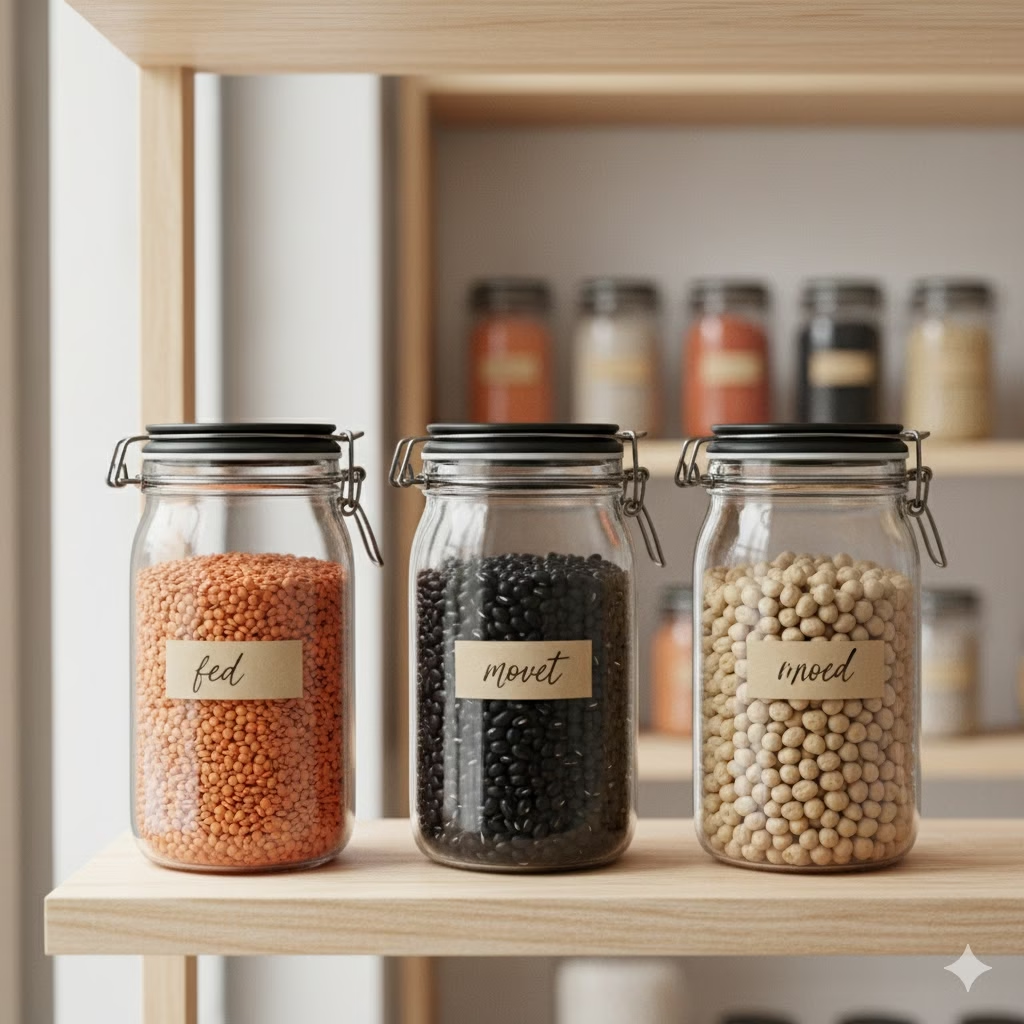
Section 2: Fats, Oils & Vinegars (The Flavour Trio)
These are crucial for adding depth of flavour and providing natural, non-toxic cleaning power, add them to your Pantry Checklist.
6. White Distilled Vinegar
- Why they’re essential: An acid for cooking and an unparalleled, cheap, natural, and non-toxic cleaner.
- How to do it: Purchase in the largest glass bottle available or refill a bottle at a bulk liquid station.
- Example Use (Cooking): Brightens up sauces, acts as a mild preservative for pickling.
- Example Use (Zero-Waste Hack): The ultimate all-purpose cleaner. Mix 1:1 with water in a spray bottle for streak-free windows, kitchen surfaces, and bathroom disinfection. Add citrus peels to the bottle for a week to infuse a fresh scent (see How to Do It below).
7. Olive Oil (or other preferred cooking oil)
- Why they’re essential: The base for most cooking, salad dressings, and seasoning and an important part in your Pantry Checklist.
- How to do it: Look for refill stations that allow you to bring your own bottle.
- Example Use (Cooking): Sautéing, roasting, dipping, and dressing.
- Example Use (Zero-Waste Hack): Mixed with vinegar and a few drops of essential oil (like lemon), it makes an excellent, natural wood furniture polish.
8. Salt (Sea Salt or Himalayan)
- Why they’re essential: The most basic and necessary seasoning, plus a fantastic scrubber and deodorizer.
- How to do it: Buy in bulk bags and store in a durable container or salt pig.
- Example Use (Cooking): Seasoning all meals.
- Example Use (Zero-Waste Hack): Use a paste of salt and lemon to scrub and naturally disinfect wooden cutting boards, or use it to scour pots and pans.
9. Baking Soda (Bicarbonate of Soda)
- Why they’re essential: A leavening agent for baking and a powerhouse for cleaning, deodorizing, and mild scrubbing.
- How to do it: Buy the largest box or bag possible and store it in an airtight jar to prevent it from absorbing odours.
- Example Use (Cooking): Used in baking recipes to create rise.
- Example Use (Zero-Waste Hack): Place an open container in your fridge to absorb odours. Use as a gentle abrasive scrub for sinks and tubs. Mix with vinegar for a powerful, non-toxic drain cleaner.

Section 3: Flavour Enhancers & Spices
Spices are vital for delicious food and often contain natural properties useful in the Pantry Checklist.
10. Black Peppercorns
- Why they’re essential: Universal seasoning.
- How to do it: Buy whole peppercorns in bulk and grind fresh.
11. Herbs & Spices (Choose 3-5 key ones, e.g., Oregano, Cumin, Chilli Powder)
- Why they’re essential: Adds complexity and variety to simple base meals.
- How to do it: Buy small amounts in bulk (just what you’ll use in 6 months) to ensure freshness. Store in small, labelled, airtight jars away from heat and light.
12. Garlic Powder & Onion Powder
- Why they’re essential: Quick flavour for when fresh is unavailable or you need a deeper, more mellow flavour.
- How to do it: Same bulk rules as other spices.
13. Nutritional Yeast
- Why they’re essential: A key vegan staple that adds a cheesy, umami depth to dishes.
- How to do it: Buy in bulk.
- Example Use (Cooking): Vegan ‘cheese’ sauces, dusting on popcorn.

Section 4: Sweeteners & Liquids
Essential for flavour balance and can be used to make homemade wellness products, add these to your Pantry Checklist.
14. Sugar (Granulated or Coconut Sugar)
- Why they’re essential: Sweetener for baking and beverages.
- How to do it: Buy in bulk and ensure a completely dry, airtight seal to prevent clumping.
- Example Use (Zero-Waste Hack): Mix with a small amount of oil to create a simple, invigorating body scrub.
15. Pure Maple Syrup or Honey
- Why they’re essential: Natural sweetener. Choose honey for its medicinal properties.
- How to do it: Buy in glass jars. Look for local honey/syrup to reduce transit impact.
16. Dried Fruit (Raisins, Apricots)
- Why they’re essential: Healthy snack, natural sweetener for baking, and great for adding texture to oats or trail mix.
- How to do it: Bulk buy.
17. Dried Nuts & Seeds (Almonds, Sunflower Seeds)
- Why they’re essential: Snack, baking ingredient, and base for homemade nut butter or plant milk.
- How to do it: Bulk buy and store in the fridge or freezer to prevent them from going rancid (which is a common issue with nuts).
- Example Use (Zero-Waste Hack): The leftover pulp from making nut milk can be dehydrated and ground into flour.
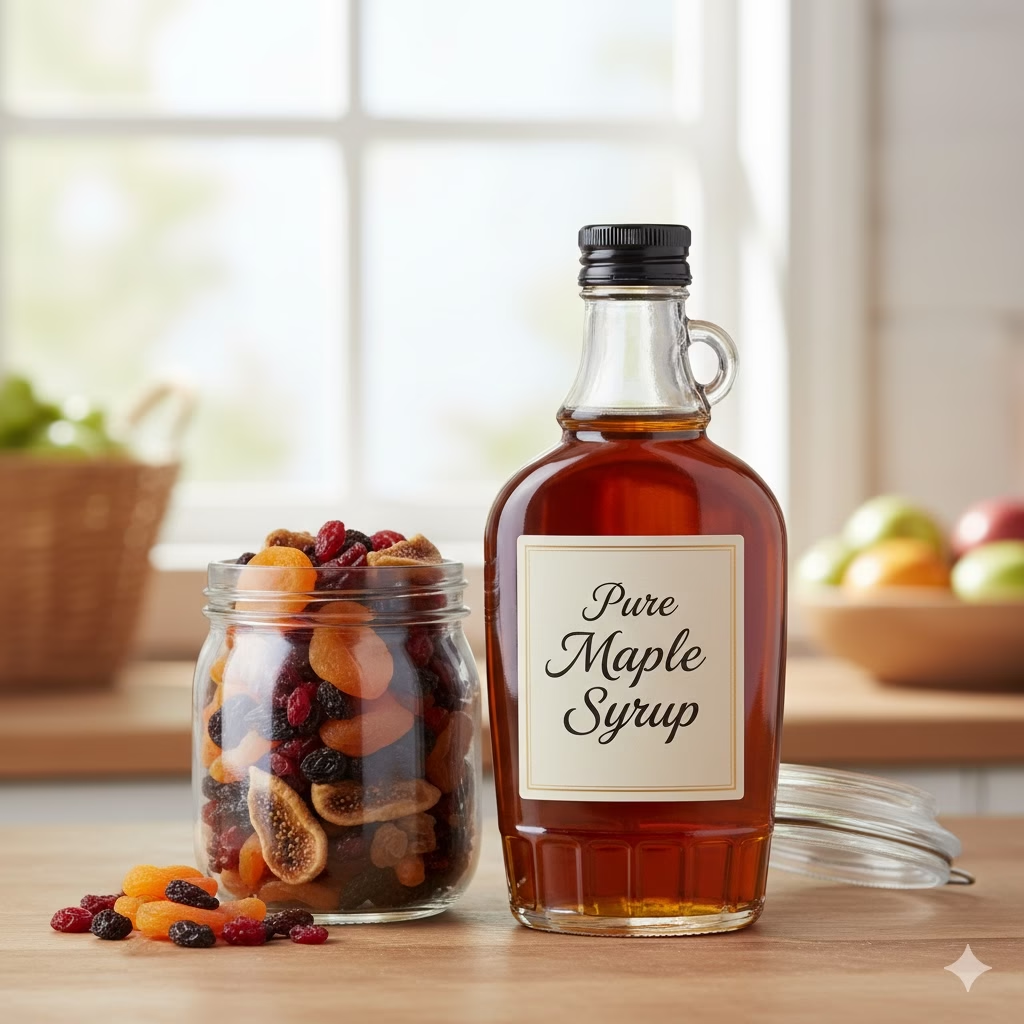
Section 5: Multi-Use Kitchen & Home Staples
These final three on the Pantry Checklist are the ultimate multi-taskers for the kitchen and cleaning arsenal.
18. Lemon/Lime (Fresh or Dried Citrus Peels)
- Why they’re essential: Flavour enhancer, source of Vitamin C, and a natural disinfectant.
- How to do it: Always keep a few fresh, or collect and dry the peels.
- Example Use (Cooking): Juice for dressings, zest for flavouring.
- Example Use (Zero-Waste Hack): Rubbing a cut lemon over a chopping board helps sanitise and deodorise it. Citrus peels are essential for infusing cleaning vinegar (see How to Do It below).
19. Castile Soap (Liquid or Bar)
- Why they’re essential: While technically a specialty item, it’s a necessary, highly concentrated, vegetable-based, biodegradable soap that replaces nearly every cleaning and body product.
- How to do it: Buy the largest size bottle or a large bar.
- Example Use (Zero-Waste Hack): Diluted for hand soap, dish soap, laundry detergent, body wash, and even a mild pest repellent for plants.
20. Coffee Grounds/Used Tea Bags
- Why they’re essential: The ultimate “waste” that still has plenty of life left.
- How to do it: Collect in a designated jar or compost caddy.
- Example Use (Zero-Waste Hack): Used coffee grounds are fantastic for composting, deodorizing the fridge (if dry), or mixing with oil as a DIY cellulite scrub. Used tea bags can be used to deodorize smelly shoes.
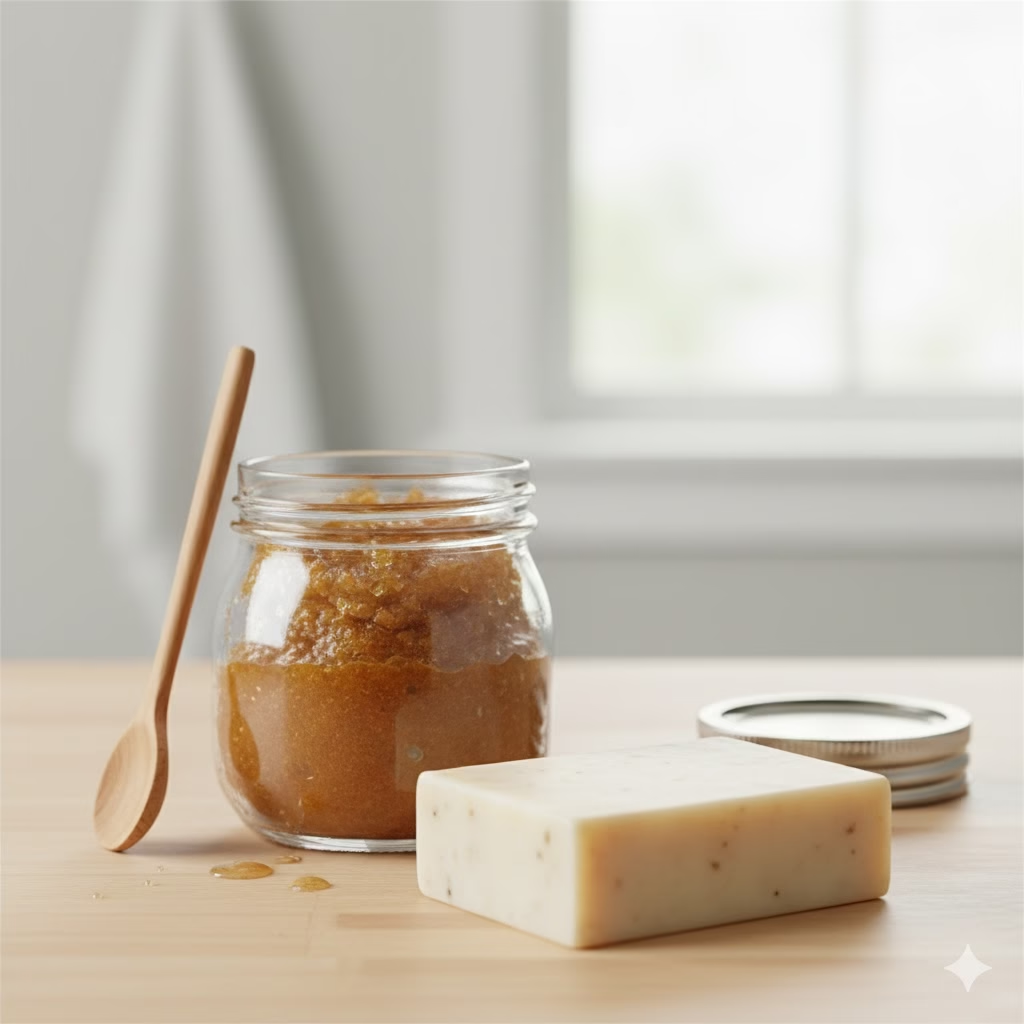
How to Do It: Zero-Waste Pantry Storage & Application
Transitioning your pantry requires a system. Here is a step-by-step guide on how to implement the zero-waste mindset for a Pantry Checklist.
Step 1: The Container Overhaul (Image Placement 7)
You don’t need to buy new containers! Reuse, Repurpose, and Thrift.
- How to do it: Save all your old glass jars (pasta sauce, pickles, jam). Wash them thoroughly, remove labels (soak in hot, soapy water, then scrub off residue with a paste of baking soda and oil). These are your new bulk storage containers.
- Pro Tip: Uniformity is nice, but function is better. Make sure the lid creates an airtight seal to keep pests out and freshness in.
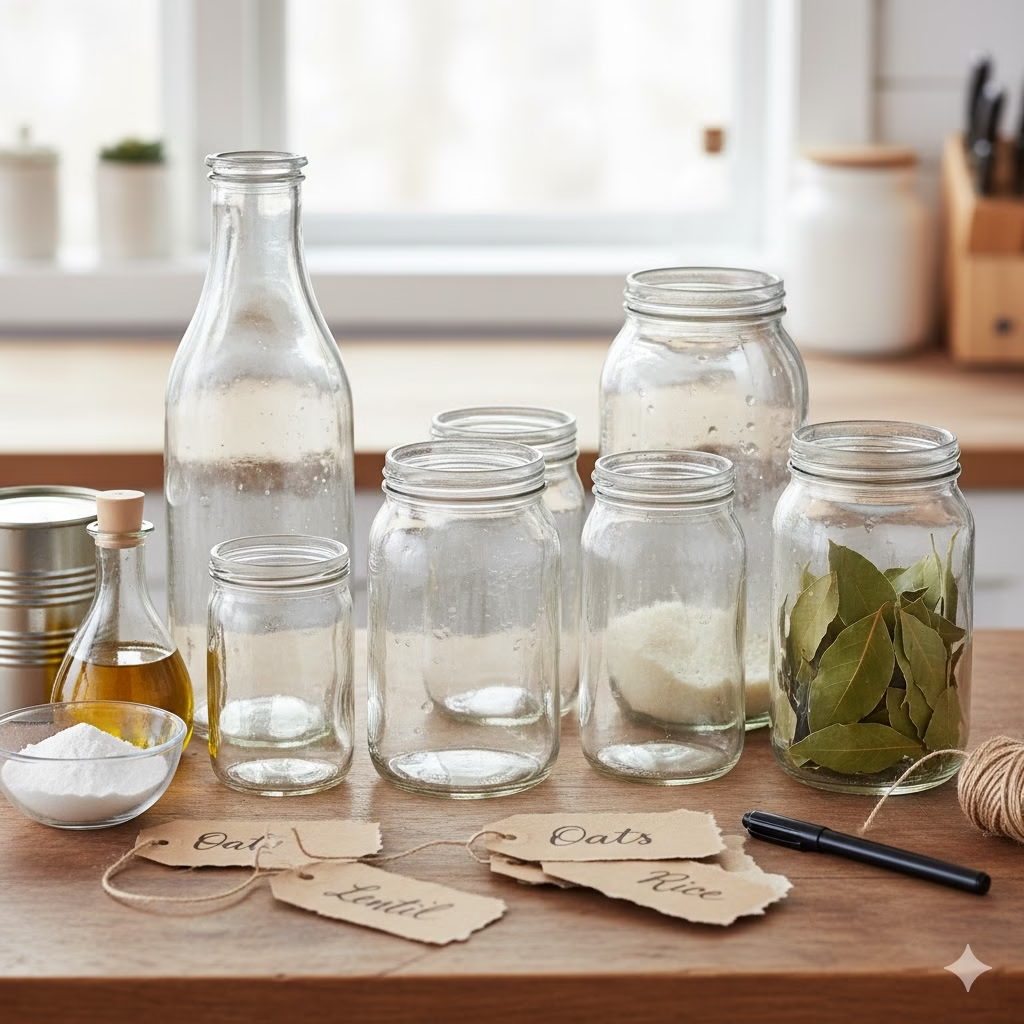
Step 2: The Shopping Protocol
- How to do it: Before you shop, take an inventory of what you need from your Pantry Checklist. Pack your reusable containers and produce bags.
- The Tare Weight: When shopping in a bulk store, you must get the tare weight (the weight of your empty container) recorded before filling it. This weight is subtracted at the till so you only pay for the product you’ve added.
- Pro Tip: Start small. Only buy a few weeks’ worth of a new bulk item to ensure you like it and will use it up before it goes stale.
Step 3: Mastering the Multi-Use Staples
Here are two essential recipes that use your Pantry Checklist items for zero-waste cleaning:
A. All-Purpose Citrus-Infused Vinegar Cleaner
- What you need (from the list): White Distilled Vinegar (No. 6), Lemon/Lime Peels (No. 18).
- How to do it:
- Fill a jar about half to three-quarters full with fresh citrus peels (lemon, orange, grapefruit—any you have saved).
- Pour White Distilled Vinegar (No. 6) over the peels until the jar is full. Seal it.
- Store in a cool, dark place for 2-4 weeks. The vinegar will absorb the citrus oils and scent.
- Strain the liquid and discard the peels (compost them).
- To use, mix the infused vinegar with water in a 1:1 ratio in a spray bottle.

B. Non-Toxic Drain Declogger
- What you need (from the list): Baking Soda (No. 9), White Distilled Vinegar (No. 6), Boiling Water.
- How to do it:
- Pour $1/2$ cup of Baking Soda (No. 9) down the clogged drain.
- Follow immediately with $1/2$ cup of White Distilled Vinegar (No. 6).
- Cover the drain and let the fizzing reaction work for about 30 minutes (this is the key to dissolving the gunk).
- Flush the drain with a pot of boiling water.

The Zero-Waste Pantry and Food Waste Reduction
A well-stocked pantry is your best weapon against food waste. When you can clearly see what you have, you are far less likely to overbuy or let perishable food spoil, this Pantry Checklist will help you get organized.
Example: The Scrap Revolution
- How to do it: Keep a large glass jar or silicone bag in your freezer and toss in vegetable scraps (carrot ends, onion peels, celery leaves, mushroom stems) and herb stems.
- The Payoff: Once the container is full, simmer the scraps in a large pot of water for a few hours with a pinch of Salt (No. 8) and Black Peppercorns (No. 10) to create a deeply flavourful, zero-cost vegetable stock. You can then use this stock as a base for almost any soup, rice dish, or sauce, maximizing the use of every single food item.

Frequently Asked Questions (FAQ)
Q1: How do I deal with pests like pantry moths and weevils in my bulk items?
A: Prevention is key! Always store dry goods (grains, flours, nuts) in completely airtight glass or metal containers (not plastic or fabric bags). Before storing, some people freeze new bulk grains and flours for 48-72 hours to kill any potential eggs. If you get an infestation, immediately discard the contaminated food in a sealed compost bag outside, clean the area thoroughly with White Distilled Vinegar (No. 6), and store new items with a bay leaf tucked inside the container—pests hate the smell.
Q2: I don’t have access to a bulk store. Can I still do a zero-waste pantry?
A: Absolutely. While bulk is ideal, you can focus on reducing plastic waste. Look for items packaged in paper bags (Flour, Oats, Salt), cardboard (Pasta), or glass/metal (Oils, Honey). Prioritize items you use most often for the highest-impact swaps. Consider coordinating with neighbours for a large online order of staple items packaged in paper or biodegradable materials to reduce packaging per unit.
Q3: Is it safe to use vinegar-based cleaners on all surfaces?
A: No, be cautious. While highly effective, the acidity of White Distilled Vinegar (No. 6) can etch or dull natural stone surfaces like granite, marble, and soapstone over time. For these surfaces, a solution made with diluted Castile Soap (No. 19) and water is a safer, non-acidic alternative. Always test a small, inconspicuous area first.
Q4: How do I store fresh produce zero-waste without plastic?
A: Use cotton mesh bags for non-leafy produce. Leafy greens stay fresh longer when wrapped in a damp cotton tea towel (or “unpaper towel”) and stored in the crisper drawer of your fridge. Root vegetables should be stored in a cool, dark place with good air circulation (like a paper bag or basket) outside the fridge.
Q5: How do I make the switch to a zero-waste pantry affordable?
A: Focus on the staple ingredients that replace high-waste, pre-packaged foods and cleaners. Buying dried Beans & Legumes (No. 1), Oats (No. 2), and Rice (No. 3) in bulk is significantly cheaper than buying canned or pre-made versions. Making your own cleaner with Baking Soda (No. 9) and Vinegar (No. 6) costs pennies compared to brand-name solutions. The initial investment in a few good containers will be recouped quickly through these savings.
References
- Wildandstone – How to Build and Organise a Zero-Waste Pantry
- Regenwaste – The Benefits of Zero Waste Shops
- Daylesford – Our Zero Waste Pantry
Recent Posts
